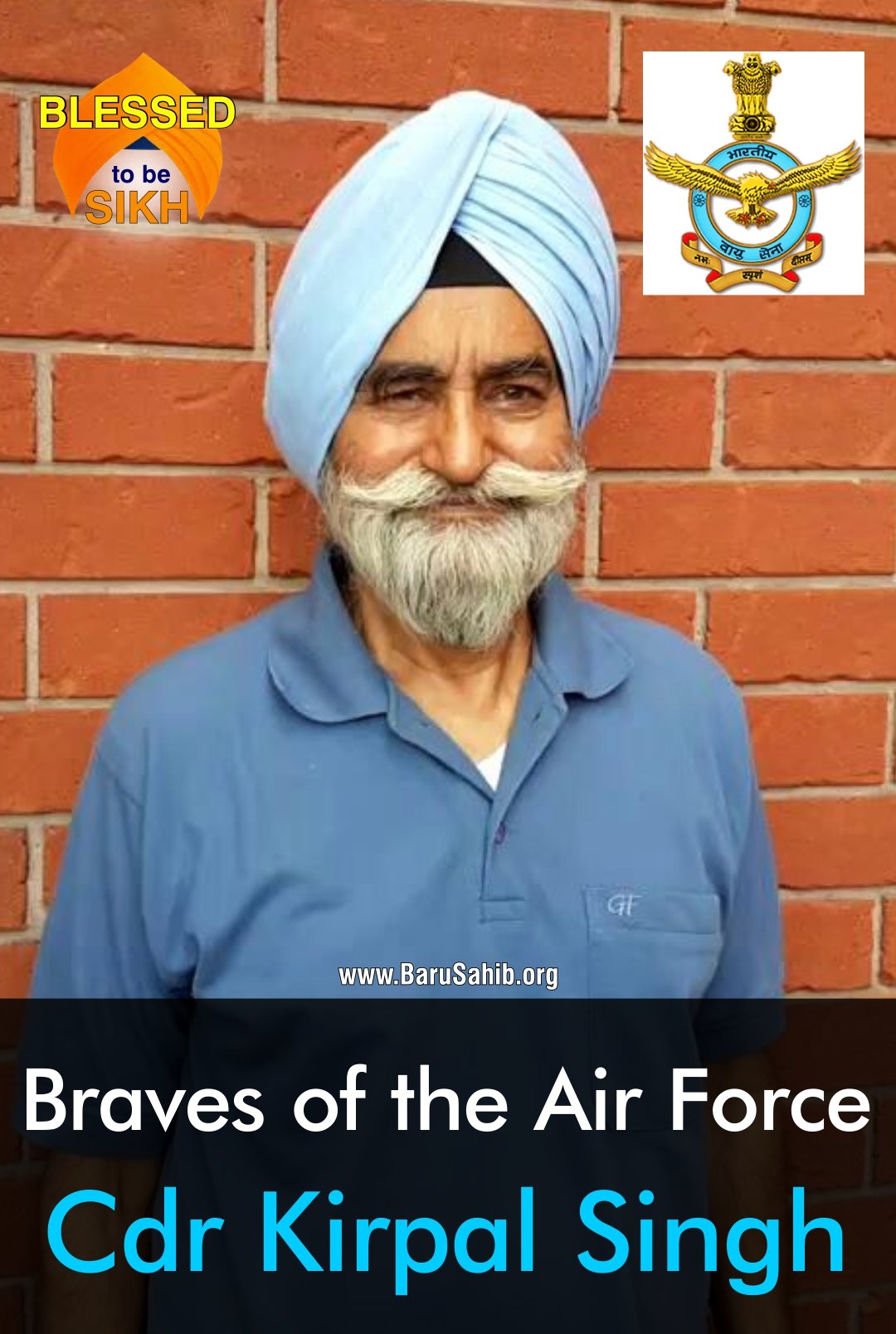Braves Of The Air Force – Cdr Kirpal Singh
Young Kirpal Singh was a refugee from that part of India which is today called Pakistan. India got partitioned in 1947 and millions were massacred in the name of a religion which cannot accept non-believers. It was an ordeal for everyone to escape and so many of us did just that. Kirpal, born in Abbottabad,(NWFP) […]
Young Kirpal Singh was a refugee from that part of India which is today called Pakistan. India got partitioned in 1947 and millions were massacred in the name of a religion which cannot accept non-believers. It was an ordeal for everyone to escape and so many of us did just that. Kirpal, born in Abbottabad,(NWFP) in 1935, escaped & resettled with his family in Dehradun.
Nothing deterred this brave son of India and he joined the Indian Air Force by clearing the SSB for the 66th Pilots’ Course. He was commissioned in 1956 and joined a Vampire Squadron.
Kirpal was an ‘Ace’ in Gunnery and won the “Arjuna’ award in his very first gunnery meet. ‘Arjuna’ award was an in-house award of the IAF and apparently has been, since discontinued. Young Flt Lt Kirpal was soon to be a test pilot and was sent to the Empirical Test Pilots’ School in England for his training. He was instrumental in developing so many varied flying ‘platforms’ for the IAF, which the IAF used, both during peace and the ensuing wars. He was awarded the Vayu Sena Medal for his exceptional flying skills.
Kirpal was posted with N0 27, No 20 Squadrons where he flew Gnats and many other aircraft as well, but his testing and flying skills on a Hunter were soon to become legendary. He took an active part in the 1965 & 1971 wars. His own creation of a platform in an unarmed Mig 21, carrying a special camera, was extensively flown and used by him during the 1971 operations. He successfully flew alone,at very low heights all over the borders and brought back photographic intelligence of the ongoing war. Recognising his contribution to the war efforts, especially in the face of a treacherous enemy, Kirpal was decorated with a Vir Chakra in 1972.
He was later posted with the ASTE as an Instructor from where he switched jobs and joined the Steel Authority of India as their chief pilot.
In nearly forty years of his flying career, Kirpal Singh has logged over 10000 flying hours in 56 different types of aircraft. He also remained the flying examiner for seventeen years with the DGCA.
There are heroic stories about him and about his flying skills where he brought back a totally crippled Mig-21 which had suffered a total electrical failure thus denying him all references and controls. He had landed that aircraft safely to fly another day. Many others would have possibly ejected in such a situation.
Kirpal is settled in Rajpura, Punjab. His three children are well accomplished and are doing well in their lives.
He often lives with his two sons in Toronto, Canada and met with me here to give me the honour to write about him. The Kirpals celebrated their golden jubilee this year in January.
The AFA wishes both Mrs. Kirpal and the 82 years young Kirpal Singh all the best for the future.










